Vitoria - 21 June 1813
Historical Background
1813 was the year the balance of power swung in the Allies’ favor in Spain. Wellington’s army received substantial reinforcements from England. Napoleon drew large numbers of veteran troops from Spain to rebuild after the disastrous 1812 campaign. Wellington’s Allied army advanced through the mountains into the North East of Spain, outflanking the French armies of Joseph Bonaparte and forcing them toward the French border. Joseph, encumbered by a massive baggage train, had fallen back to Vitoria to await General Clausel and reinforcements. Joseph unwisely deployed to the west of Vitoria. The defensive terrain was good, but he had only a single route of retreat through the pass and that massive baggage train was in the way. Army morale was suspect.
Wellington determined to strike at four vulnerable areas in Joseph’s line and destroy the French army before Clausel’s arrival took away his numerical superiority. The first attack was conducted by Major General Hill’s corps and a Spanish Division against the French left flank. Kempt’s Light Division was to cross the Zadorra and extend the British line. Two divisions, including Picton’s, were to engage the French right flank, and two more divisions under Graham were to attack across the Zadorra north of Vitoria to block the retreat route.
Hill’s attack slowly pressed the French back, and Kempt’s division crossed the unguarded intact bridges on the Zadorra to aid the attack. Picton’s divisions were late joining the fight, but luck was with the British. Hill’s attack attracted virtually all of the French reserves. When Picton’s divisions engaged, they made good progress, and the entire French army was pushed back into an ever-shrinking area. Over seventy guns on each side engaged in the largest artillery duel seen in Spain as the Allied infantry continued to press forward. By 4 P.M. the French were beaten, and Joseph’s order to retreat turned into a full-fledged rout as the troops heard the sound of battle near their escape route through the pass.
The entire French army was saved from destruction by two events. First, terrain and fanatical French resistance prevented Graham from blocking the retreat path. Second, the Allied army dissolved into a horde of looters as they came upon the riches of the baggage train, effectively ending pursuit. As it was, Joseph’s army suffered 8,000 casualties and lost all of its artillery and stores in addition to the baggage train.
The stage is set. The battle lines are drawn and you are in command. Can you change history?
|
|
Set-Up Order
|
Battle Notes
British Army
• Commander: Wellington
• 5 Command Cards
• Optional 6 Tactician Cards
• *Move First![]()
![]()
![]()
![]()
![]()
![]()
 |
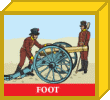 |
 |
 |
 |
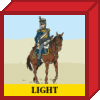 |
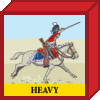 |
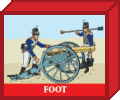 |
 |
 |
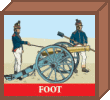 |
|||||
| 3 | 1 | 1 | 7 | 1 | 1 | 2 | 1 | 1 | 2 | 3 | 1 | 1 | 1 |
French Army
• Commander: Joseph Bonaparte
• 4 Command Cards
• Optional 2 Tactician Cards
• *Move First![]()
![]()
![]()
![]()
![]()
 |
 |
 |
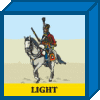 |
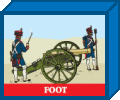 |
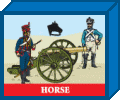 |
|
| 8 | 4 | 2 | 2 | 3 | 1 | 3 |
Victory
9 Banners
Special Rules
• *Move First. At the start of the battle, each player simultaneously selects and reveals one Command card from their respective hands. The card each player selects will be the card that each player must use on his first turn. The side that will move first is the side with the card that orders the lowest printed number of units. Counter-Attack, Elan, First Strike, Leadership and Rally Tactic Cards cannot be played. Remaining Tactic Cards are assumed to order the maximum number of allowable units. If a tie, the British player moves first.
• The Spanish Guerrilla Action rule is not in effect.
• The River Zadorra is not fordable.

